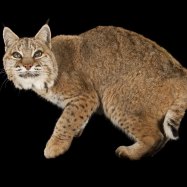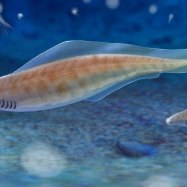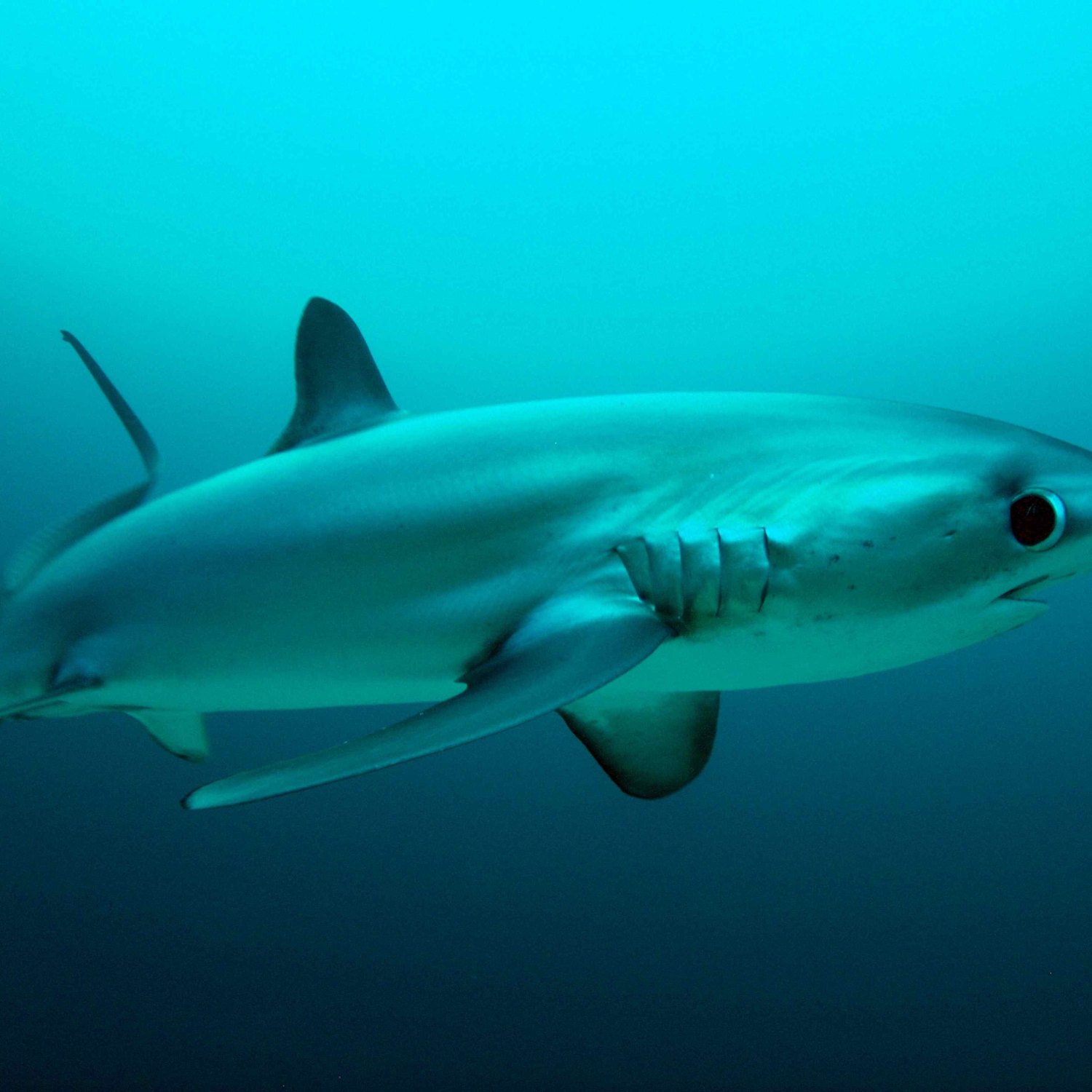
Thresher Shark
Up to 20 feet (6 meters)
The Thresher Shark, with its distinctive elongated tail, can grow up to 20 feet in length and is found in all oceans except the Arctic. Belonging to the Alopiidae family, its streamlined and long body shape allows it to swiftly catch its prey. #ThresherShark #Alopiidae #StreamlinedBody #OceanPredator
Animal Details Summary:
Common Name: Thresher Shark
Kingdom: Animalia
Habitat: Open ocean
The Majestic Thresher Shark: A Fascinating Creature of the Open Ocean
The ocean is home to many incredible creatures, some of which amaze us with their size, while others leave us in awe with their unique characteristics and behavior. One such ocean dweller is the Thresher Shark, a magnificent creature that roams the vast open waters of our planet.The scientific name of the Thresher Shark is Alopias vulpinus, but it is commonly known as the Thresher Shark due to its specialized long tail that resembles a farmer's threshing tool. This species belongs to the Kingdom Animalia, Phylum Chordata, and Class Chondrichthyes, making it a distant relative of other sharks and rays Thresher Shark.
Anatomy and Physical Characteristics
The Thresher Shark is a majestic creature with a streamlined body, designed for speed and agility in the open ocean. They can grow up to 20 feet (6 meters) in length and weigh up to 1000 pounds (450 kilograms). Their body shape is elongated, with a distinctive large dorsal fin that helps them to navigate through the water with precision.This shark's most unique feature is its long tail, which can grow up to half of its body length. The thresher shark uses its tail in a whip-like motion to stun its prey and then swallows it whole. This long tail also helps the shark to swim effortlessly, propelling it through the water at high speeds of up to 20 miles (32 kilometers) per hour.
The Thresher Shark has a dark blue-grey color on its upper body, which helps it to blend in with the deep ocean waters, making it less visible to its prey. Its underside is white, acting as camouflage against the bright surface when viewed from below.
Habitat and Distribution
Thresher Sharks are known to inhabit the open ocean, preferring the tropical and temperate waters worldwide Teacup Poodle. They can be found in various countries, and their presence has been documented in all oceans except the Arctic Ocean. The Thresher Shark is a highly migratory species, traveling long distances in search of food and suitable breeding grounds.Their specialized body and behavior make Thresher Sharks most suited to live in the open ocean, away from the coastal regions. They are also known to swim at great depths, sometimes reaching up to 3500 feet (1050 meters) below the surface.
Feeding Habits
As a carnivorous species, Thresher Sharks feed on a variety of marine creatures found in the open ocean. Their diet consists mainly of small fish, crustaceans, and squid. Their long tail plays a significant role in their hunting process, allowing them to stun and catch their prey effortlessly.Thresher Sharks also exhibit cooperative feeding behavior, where they hunt in groups to increase their chances of success. This behavior is rare among sharks and adds to the uniqueness of these creatures.
The Relationship Between Humans and Thresher Sharks
Thresher Sharks are not known to be aggressive towards humans and pose little threat to them. However, as with many other shark species, Threshers have been subject to overfishing and are now classified as a vulnerable species by the International Union for Conservation of Nature (IUCN).Due to their high commercial value, Thresher Sharks are caught for their meat, fins, and liver oil. They are also inadvertently caught in commercial fishing gear, which has significantly contributed to their declining population numbers. Awareness and conservation efforts are vital to protect the remaining Thresher Shark populations and preserve this fascinating species for future generations to come.
Adaptive Features and Survival Techniques
In the harsh and ever-changing environment of the open ocean, Thresher Sharks have evolved unique features and behaviors that help them to survive and thrive. Some of these adaptations include:- Large body size: Thresher Sharks' large body size helps them to minimize heat loss in colder ocean waters, allowing them to maintain their body temperature and metabolic rate.
- Camouflaged coloration: Their dark blue-grey color on the upper body and white underside help Thresher Sharks to blend in with their surroundings, making them less visible to potential predators and prey.
- Long tail: The specialized long tail of the Thresher Shark is a unique feature that aids in their defense, locomotion, and hunting methods.
- Cooperative hunting: Thresher Sharks exhibit cooperative hunting behavior, where they work together to increase their chances of catching prey, further enhancing their survival rate.
The Importance of NLP in Understanding Thresher Sharks
Natural Language Processing (NLP) is a branch of artificial intelligence that focuses on understanding and analyzing human language. While Thresher Sharks do not possess the ability to speak, understanding their behavior and interactions in the open ocean is crucial for their conservation efforts.By using NLP, researchers and conservationists can analyze data on Thresher Shark sightings, migrations, and behavior patterns to understand their ecological role and develop effective conservation strategies. These insights can help protect Thresher Sharks and other marine species, ensuring a healthy balance in our ocean ecosystems.
In Conclusion
The Thresher Shark is a fascinating creature of the open ocean, with its long tail, streamlined body, and cooperative hunting behavior. Despite being a vulnerable species, with proper conservation efforts and understanding of their behavior through NLP, we can help protect these majestic sharks and their vital role in maintaining our ocean's health.Let us continue to marvel at the beauty and uniqueness of the Thresher Shark and take action to preserve them for future generations to witness and appreciate the wonders of our ocean's creatures.

Thresher Shark
Animal Details Thresher Shark - Scientific Name: Alopias vulpinus
- Category: Animals T
- Scientific Name: Alopias vulpinus
- Common Name: Thresher Shark
- Kingdom: Animalia
- Phylum: Chordata
- Class: Chondrichthyes
- Order: Lamniformes
- Family: Alopiidae
- Habitat: Open ocean
- Feeding Method: Carnivorous
- Geographical Distribution: Worldwide in temperate and tropical waters
- Country of Origin: Various countries
- Location: All oceans except the Arctic Ocean
- Animal Coloration: Dark blue-grey on the upper body and white on the underside
- Body Shape: Streamlined and long
- Length: Up to 20 feet (6 meters)
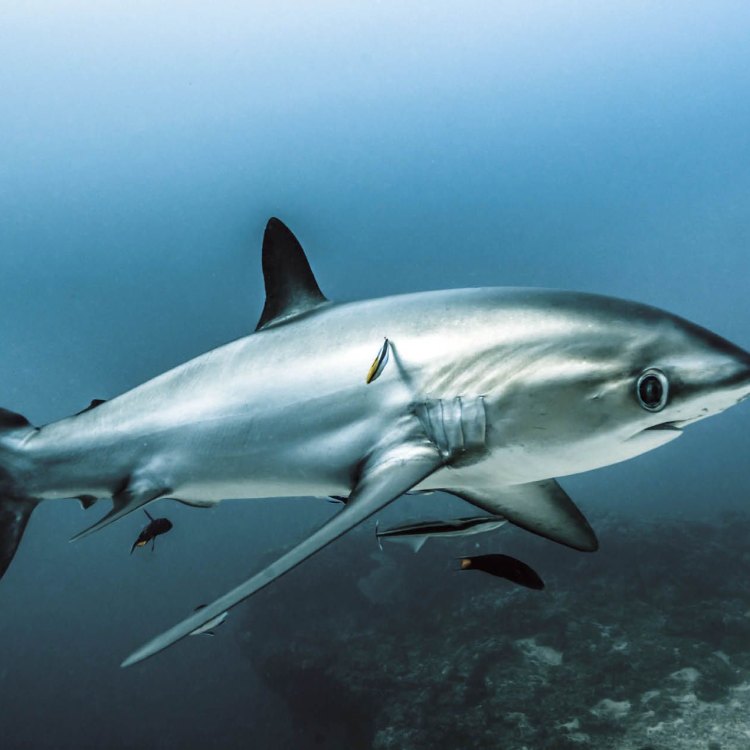
Thresher Shark
- Adult Size: Between 10 and 14 feet (3 to 4 meters)
- Average Lifespan: Up to 20 years
- Reproduction: Ovoviviparous (give birth to live young)
- Reproductive Behavior: Not well-documented
- Sound or Call: Not well-documented
- Migration Pattern: Some individuals may migrate long distances
- Social Groups: Usually solitary
- Behavior: Fast and agile swimmers
- Threats: Overfishing, habitat loss, bycatch
- Conservation Status: Vulnerable
- Impact on Ecosystem: Top predator, helps maintain balance in the food chain
- Human Use: Commercial fishing for its meat, fins, and liver oil
- Distinctive Features: Long, whip-like tail, large pectoral fins
- Interesting Facts: Known for their unique hunting technique of using their long tail to stun or herd prey
- Predator: Great white sharks and orcas
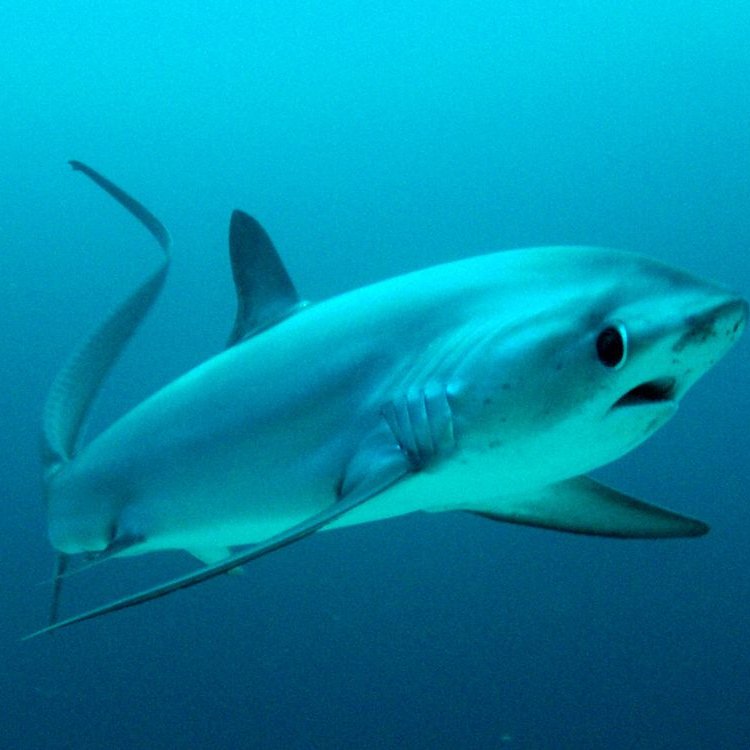
Alopias vulpinus
The Majestic Thresher Shark: A Top Predator of the Ocean
When imagining a shark, most people think of the feared Great White or the powerful Tiger Shark. However, there is one species of shark that often goes unnoticed despite its impressive size and unique features – the thresher shark. With its long, whip-like tail and large pectoral fins, the thresher shark is not your average shark. In this article, we will dive deep into the world of thresher sharks and explore their fascinating characteristics and role in the ocean ecosystem PeaceOfAnimals.Com.Adult thresher sharks are typically between 10 and 14 feet in length, with some individuals reaching up to 20 feet. This size makes them one of the largest species of sharks in the world. They can be found in all temperate and tropical oceans, except for the Mediterranean Sea. Thresher sharks have a distinctive appearance with a rounded head and a long, slender body. Their most notable feature, however, is their elongated upper tail fin, which can be as long as the shark's body. This tail fin gives the thresher shark its name, as it resembles the threshing tool used to separate grain from chaff.
Thresher sharks have an average lifespan of up to 20 years. However, their reproductive behavior is not well-documented, making it challenging to determine their exact reproductive patterns. They are ovoviviparous, meaning they give birth to live young Tibetan Terrier. Female thresher sharks carry their eggs inside their bodies until they hatch, and then the pups are born fully formed. This reproductive strategy is common among sharks, including other species such as the tiger shark and the bull shark.
As for their reproductive behavior, not much is known about it. Some scientists speculate that thresher sharks may have complex courtship rituals, but this has yet to be observed. Furthermore, it is unknown whether they form social groups or are solitary creatures. However, one thing is for sure – thresher sharks are fast and agile swimmers. They are known to breach out of the water, propelling themselves forward with their powerful, elongated tail.
Speaking of their tail, it plays a crucial role in their unique hunting technique. While most sharks primarily use their jaws to catch prey, thresher sharks have a different approach. They use their long tail to stun or herd prey, such as small fish and squid, towards their mouth. Their tail can move at speeds of up to 80 miles per hour, making it a powerful weapon. This unique hunting ability shows just how well-adapted thresher sharks are to their environment.
Although thresher sharks are top predators of the ocean, they face several threats. Overfishing is one of the most significant threats to their survival. Thresher sharks are commercially fished for their meat, fins, and liver oil, which is used in cosmetics and nutritional supplements. Every year, millions of sharks, including thresher sharks, are caught as bycatch in fishing nets intended for other species. This unsustainable fishing practice has led to a drastic decline in thresher shark populations.
Habitat loss is also a significant threat to thresher sharks as they require a healthy and thriving ocean ecosystem to survive. Pollution, ocean acidification, and climate change are all factors that affect the health of the ocean and, consequently, the survival of thresher sharks. As top predators, thresher sharks play a crucial role in maintaining balance in the ocean's food chain. Their decline could have far-reaching consequences on the entire ecosystem.
Due to these threats, thresher sharks are listed as Vulnerable on the International Union for Conservation of Nature's Red List of Threatened Species. There have been efforts to protect thresher sharks, such as implementing fishing limits and enforcing fishing regulations. However, more conservation actions and research are needed to ensure their survival.
Apart from their ecological importance, thresher sharks are also fascinating creatures with many interesting facts. For instance, while their sound or call is not well-documented, they are known to produce low-frequency sounds that may be used for communication or navigation. Additionally, some individuals may migrate long distances, but this behavior is not well-documented either. As for their social groups, they are usually solitary, but there have been rare sightings of small groups of thresher sharks swimming together.
Thresher sharks also have predators of their own – the Great White Shark and the Orca. However, they are often able to avoid these predators due to their agility and speed. In fact, thresher sharks have been observed using their tail to fend off potential attacks by hitting their predators with its powerful swing.
In conclusion, thresher sharks may not be as well-known or feared as some of their shark counterparts, but they are undoubtedly one of the most unique and impressive species in the ocean. With their distinctive features and hunting technique, they are a top predator that plays a significant role in maintaining the balance of the ocean ecosystem. However, they face various threats that put their survival at risk. It is crucial that we take action to protect and preserve these magnificent creatures before it's too late. After all, a healthy ocean means a healthy planet for both humans and marine life.
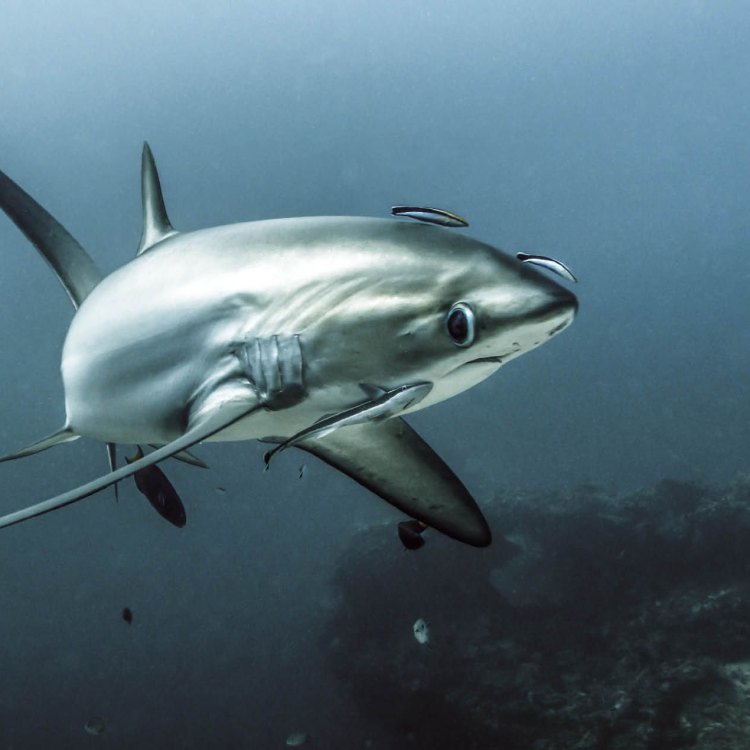
The Majestic Thresher Shark: A Fascinating Creature of the Open Ocean
Disclaimer: The content provided is for informational purposes only. We cannot guarantee the accuracy of the information on this page 100%. All information provided here may change without prior notice.

